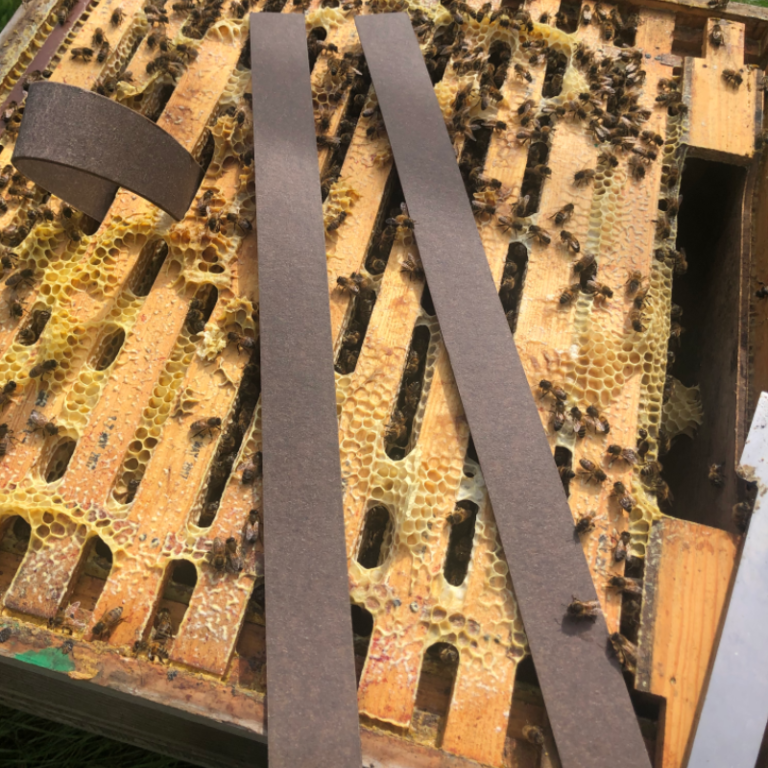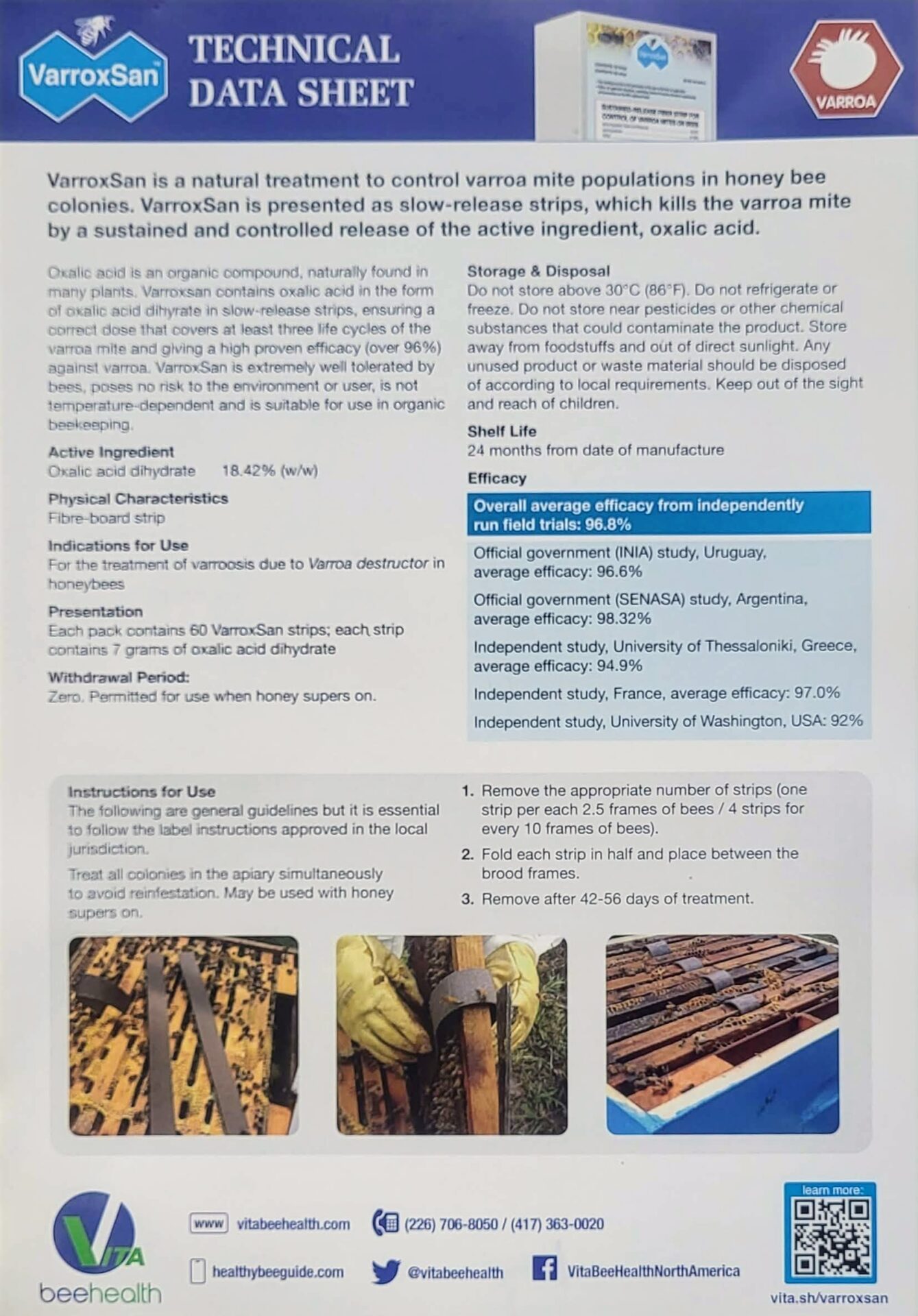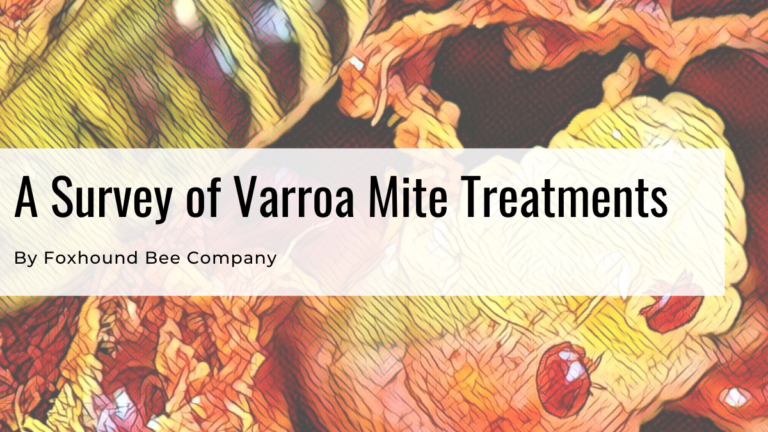The world of beekeeping is fraught with difficulty, and king among them are the varroa mites. These pests cause a lot of issues for beekeepers and honey bees and are the #1 reason a colony will fail. Not only do they physically harm bees, but they will also harm subsequent generations.
Fortunately, varroa mite control products on the market can help beekeepers control varroa. It would be better if we didn’t have to use these, but I’m glad that we have them.
One of the newer ones is called Varroxsan and is made by our friends who make Apiguard. Vita Bee has been producing Apiguard and other miticides to help beekeepers and their honey bees and their latest is Varroxsan.
They have been advocates of honey bee health for decades with their wide range of products ranging from Apistan to Varroxan now.
Table of Contents
What is Varroxsan?

If you have been keeping bees for some time, you will know that Oxalic Acid is a product that beekeepers use with mites.
There are several ways to use it, and it works very well, ranging from dribbling it in the brood nest to turning OA into a vapor inside the hive and now through a slow-release exposure.
Thanks to the research from Randy Oliver and his Oxalic Acid Dihydrate towels, we know the slow-release method works well. The slow-release technique means the bees have low exposure to the oxalic acid chemical over a long period of time.
If you have read our post on Aluen Cap, which is pretty much the same product as Varroxsan, then you are familiar with how it is made and used.
But to put it here, high-quality glycerin and oxalic acid are mixed together and poured over cardboard strips with a cardboard internal matrix. The cardboard absorbs the solution, and these strips are placed inside the hive and hung between the frames in the brood box.
Varroxsan Treatment Period
When you want to control varroa mites, you have to be aware of the instructions on the package. Varroa mite control products are controlled by the EPA, and the EPA has authorized Varroxsan as long as the user follows the directions.
The Fiberboard (Cardboard) strips are hung over the hives and each strip is designed to fit over a deep frame. However, you can still use it on medium frames. The strips are placed inside the hive for 42-56 days, which would cover 3 open brood cycles, and removed after 56 days.
It can be used any time of the year and also during honey production when you have honey supers on the hive.
42-56 day treatment period
18.42% Oxalic acid
Safe for bees, brood, queens year around
Safe for use with honey supers on
Includes 60 strips
1 strip per 2 1/2 frames of brood
98.6% Efficacy on average

Testing The Fibreboard Strips
These types of strips have been used around the world for years and are common in other countries, but it is new to the United States. As of writing this in January 2024, Varroxsan is not available for purchase in the US, but according to our supplier, Foxhound Bee Company will have it this summer. You can add your name to the waiting list using this link.
Over the course of 2023, it has been tested in a limited capacity by beekeepers and researchers in preparation for the EPA to approve its use. Washington State University has been testing throughout the year to test for its use and effectiveness.
Before Varroxsan was approved by the EPA, the oxalic acid towel treatment was tested by several universities, including Auburn and the University of Georgia, and it had mixed results. The general consensus of the results is they did not work well at knocking down mite loads, but there was potential in the solution working to keep mite levels down. Humidity, oxalic acid percentage, medium design and application all played a significant role in the results of the study.
This test was authorized by the EPA for trials, but in the test using the blue shop towels, the amount of oxalic acid dihydrate was very low. This is likely the cause of the low efficacy, but it was inconclusive.
Applying Varroxsan
In order to install the strips correctly, you do have to have access to the brood nest. In order to do this, you have to remove the honey boxes to get to the bottom of the hive in a Langstroth hive.
If you are using other types of bee hives, these strips can be used, but you’ll have to modify the technique.
Per the instructions, it’s important to use 1 strip for every 2.5 frames of brood. For most operations, this will be about 4 strips per hive, with all 4 strips being placed in the same box.
As with other hanging mite treatments, it’s important to put the strips where the varroa mites area, which is the brood box and frames with brood on them.
The strips are not laid on top of the frames but are actually pushed down between the frames. It’s important to be careful doing this as you don’t want to push it onto the queen, so having a little space between the frame when you install it will be helpful.
The treatment period is 42-56 days, but it is likely that since this is a slower-release product and varroa mites have not shown any resistance to oxalic acid, the bees can naturally remove the strips. Bees naturally remove foreign products in their hive, and that is part of how this product is designed to work.

How Foxhound Bee Company Will Use Varroxsan

Survey of Varroa Mite Treatments
Varroa mites can be a real problem for bees and their beekeepers; understanding how to deal with varroa mites is the first step to help.
It’s important to understand how varroa mite treatments fit into the overall honey bee health, as not all treatments work well in all situations. We see three major advantages of these Oxalic Acid strips compared to the other pesticides used for bees.
Bees don’t show any resistance to exposure to Oxalic Acid
There are not any temperature restrictions for Varroxsan
It is safe to use with honey on the hive and during a honey flow
This combination of features lends itself to great use during the honey flow. In our operation in Alabama, we would likely use these strips in our hives during the spring and early summer.
When we go to drop honey boxes on the hive, we will install these strips first. Then when it is time to remove the boxes about 2 months later, we can remove any strips that remain. Using this technique would work to keep mite levels down and possibly prevent high might counts that often plague us in the mid to late summer.




